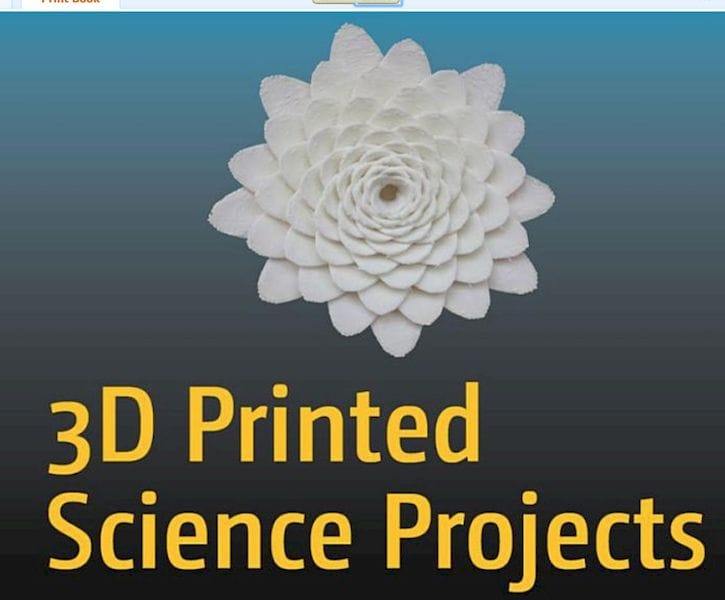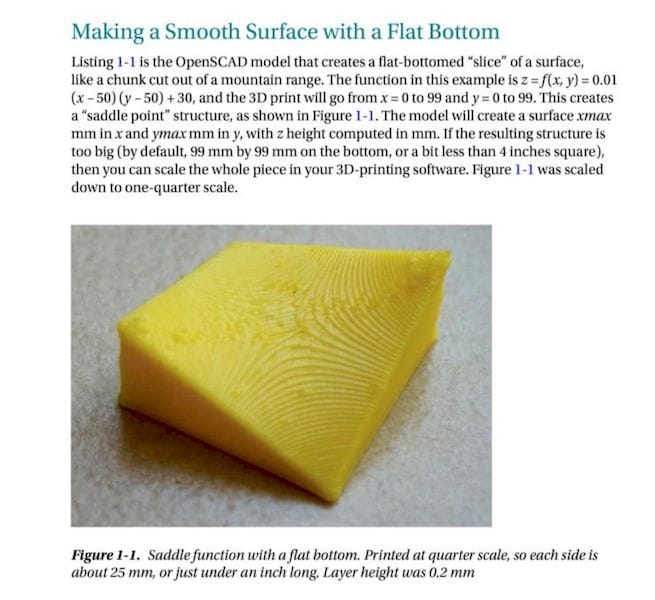
This week’s selection is the surprisingly advanced 3D Printed Science Projects book by Joan Horvath and Rich Cameron.
I’ve seen a number of introductory texts on 3D printing targeted at students, but this one seems very different. Most tomes focus on the most basic elements of 3D printing and then go on to present a series of build projects, typically fun items that students might be able to play with once complete.
The 3D Printed Science Projects book has a far more direct emphasis on “Science”. Not only do the projects directly relate to science experiments, but the book begins with a discussion of mathematics related to 3D printing!
Why do so? It’s because the common technology used throughout the book is OpenSCAD, the free, open source programmer’s 3D modeling tool. In OpenSCAD 3D models are generated by executing instructions line-by-line, rather than the visual techniques used in almost all other 3D modeling tools.
The trick here is to include some mathematics in those instructions to cause OpenSCAD to generate a wide variety of highly unusual shapes that meet the needs of the experiments described in the book.
Once they’ve explained the mathematics and 3D model generation approach, they then go on to explain the basics of 3D printing in a way that’s now become familiar in educational books on the technology.

Finally, they launch into a series of interesting science projects, including activities exploring light waves, trusses, gravity, biology, molecules and much more.
Each project includes a preparatory section that provides background on the particular topic. Once understood, they then go deep on the 3D printing and experimental action. Finally, each project contains “Teacher Tips” that would obviously be of great use to teachers using this material in their classes.
This book is quite unlike most introductory 3D printing books I’ve seen, and in a sense it may be applicable to higher levels of education, rather than for those in their early years at school.
I would also recommend this book for 3D printing enthusiasts who wish to explore new dimensions of making through OpenSCAD. If you’ve heard of OpenSCAD but haven’t really used it and wish to learn, this book could be a very good option to do so, as the projects will lead you through a lot of OpenSCAD work. The authors have also provided a github repository with the 3D code for each project as well.
And if you like this book, you’ll be pleased to know that they’ve issued a second edition with even more projects.
Via Amazon

